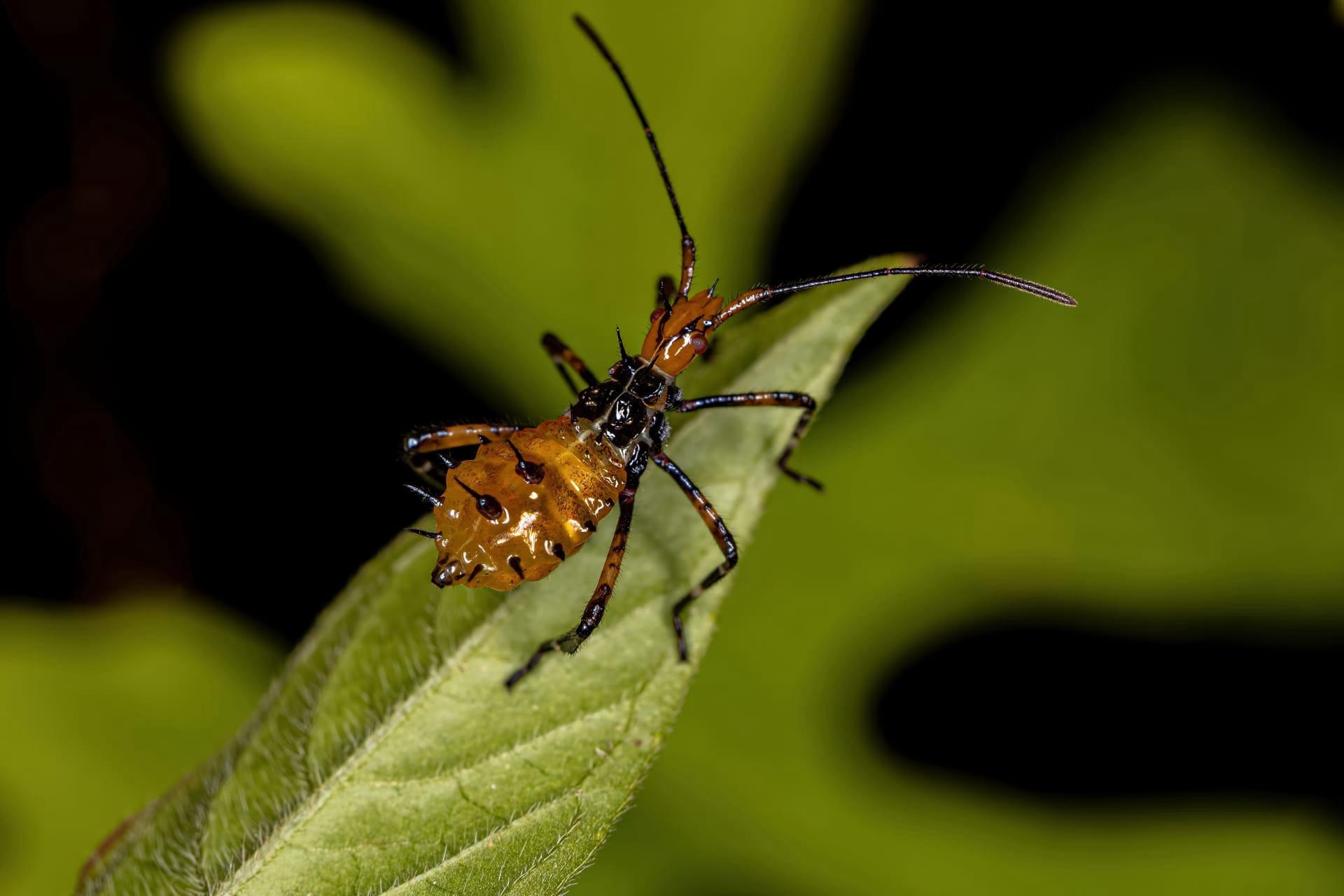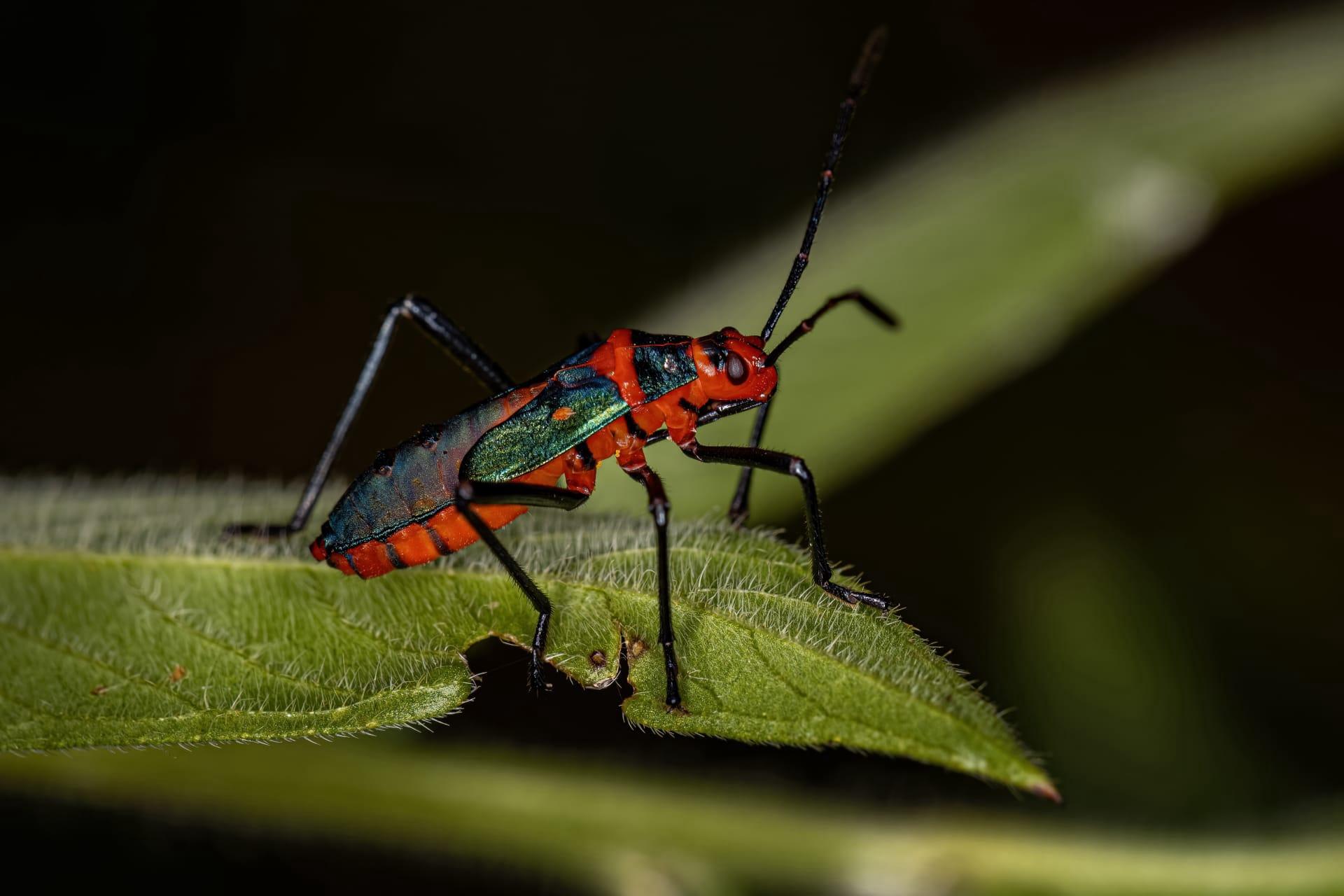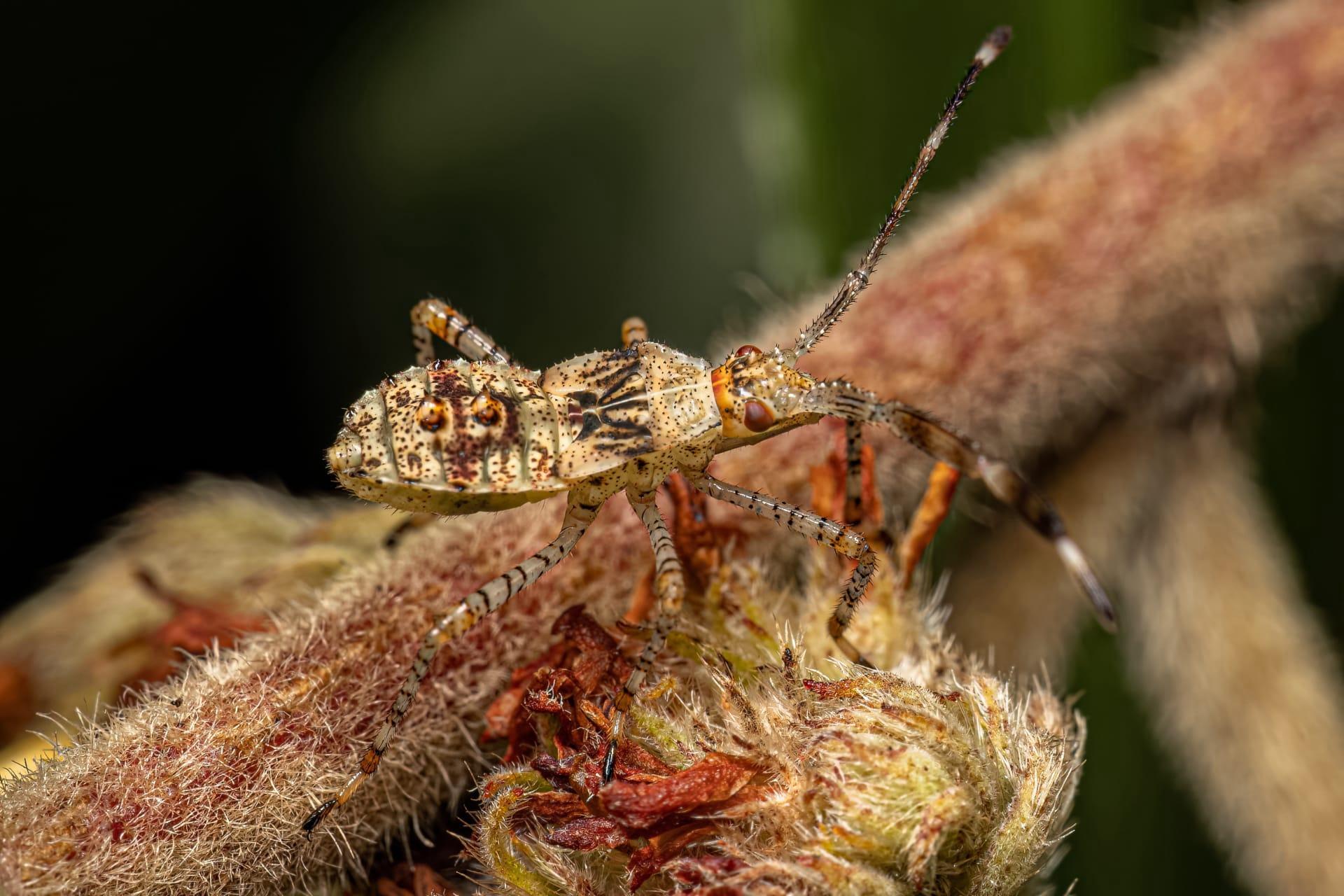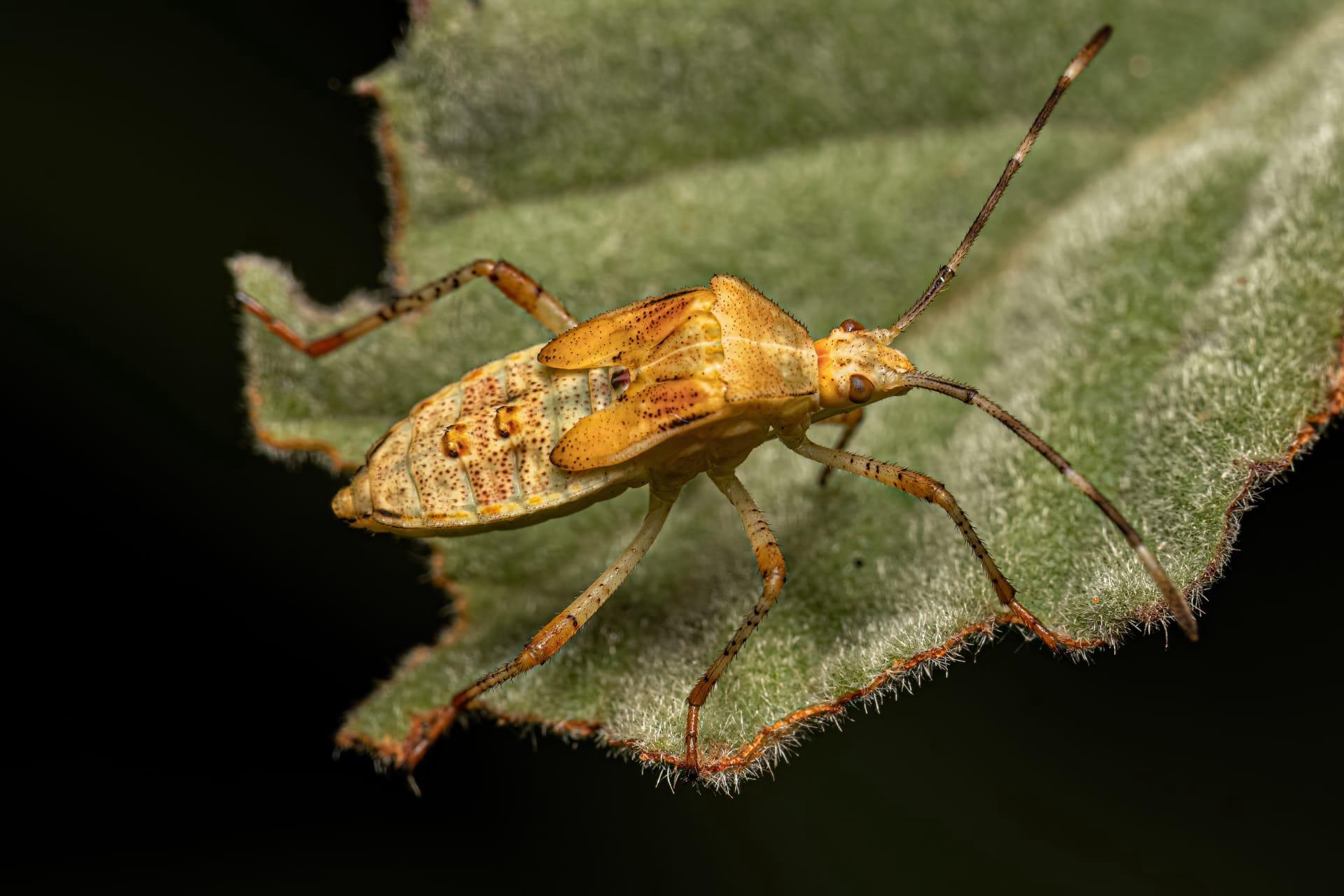Leaf Footed Bug Trivia
- Home /
- Trivia Question /
- Animal /
- Leaf Footed Bug Trivia
1
Question: What distinguishes the Leaf Footed Bug from other insects in terms of appearance?
Answer: The Leaf Footed Bug, scientifically known as a member of the Coreidae family, is most notably recognized by its unique hind legs. These legs have a leaf-like expansion on them, which is where the bug gets its name. Typically, these bugs measure about 0.75 to 1.25 inches (1.9 to 3.2 cm) in length. They also have a distinct, elongated body and can vary in color, often showing brown, black, or gray hues.
Question: What is the typical lifespan of a Leaf Footed Bug?
Answer: The lifespan of a Leaf Footed Bug can vary depending on environmental conditions, but on average, they live for about 3 to 6 months. During this time, they go through five instar stages after hatching from eggs, progressively growing larger and developing their signature leaf-like hind legs. The development from egg to adult can take about 4 to 8 weeks, depending on temperature and food availability.

2
Question: Is it true that Leaf Footed Bugs are harmful to plants?
Answer: Yes, Leaf Footed Bugs can be harmful to plants. They are known to be a pest, especially in agricultural settings. These bugs use their piercing mouthparts to suck sap from the stems and fruits of plants, which can lead to deformities in fruits, reduced crop yields, and even plant death in severe infestations. They are particularly fond of tomatoes, citrus fruits, nuts, and ornamental plants.
Question: Do Leaf Footed Bugs bite humans?
Answer: Leaf Footed Bugs are not aggressive towards humans and generally do not bite. However, if they are mishandled or feel threatened, they can pierce the skin with their beak as a defensive mechanism. Such bites are rare and usually not harmful, but they can cause mild irritation or a burning sensation.

3
Question: What do Leaf Footed Bugs eat?
Answer: Leaf Footed Bugs are primarily herbivorous. They feed on a wide variety of plants, including fruits, seeds, and leaves. Some of their preferred food sources include tomatoes, peaches, oranges, and almonds. They use their piercing-sucking mouthparts to extract sap and nutrients from these plants, often causing damage in the process.
Question: How do Leaf Footed Bugs reproduce?
Answer: Reproduction in Leaf Footed Bugs occurs through mating, where the male and female join end to end. After mating, the female lays eggs, typically on the underside of leaves. The eggs are small, cylindrical, and range in color from white to orange. A female can lay hundreds of eggs over her lifespan. These eggs hatch into nymphs, which undergo several molts before reaching adulthood.

4
Question: Are Leaf Footed Bugs solitary or social insects?
Answer: Leaf Footed Bugs are generally solitary, but they can be found in groups, especially when feeding or during the mating season. They don't form colonies or have complex social structures like some other insects, but their tendency to aggregate can be attributed to favorable feeding conditions or the need to find mates.
Question: What natural predators do Leaf Footed Bugs have?
Answer: Leaf Footed Bugs have several natural predators that help control their population. These include birds, spiders, and other larger insects. In some regions, parasitic wasps lay their eggs inside the eggs of Leaf Footed Bugs, and the wasp larvae consume the bug embryos. Additionally, some predatory insects feed on the nymphs and adults, contributing to natural pest control.

5
Question: Can Leaf Footed Bugs fly, and how well do they do so?
Answer: Yes, Leaf Footed Bugs are capable of flight. They have two pairs of wings, with the front pair being partially hardened and serving as protective covers for the more membranous hind wings. While they can fly, they are not particularly adept at long-distance flight and typically use this ability to escape predators or disperse to new feeding areas.
Question: How do Leaf Footed Bugs respond to changes in the environment, particularly temperature?
Answer: Leaf Footed Bugs are sensitive to temperature changes. They thrive in warm climates and are more active during the warmer months. In colder temperatures, they exhibit a behavior known as overwintering, where they seek shelter in crevices, under bark, or even inside homes to survive the winter. Their activity significantly reduces during this period, and they enter a state of dormancy until the weather warms up again.